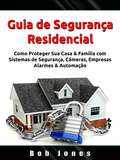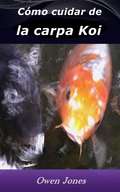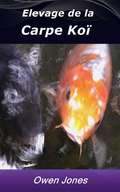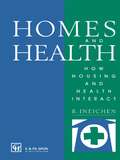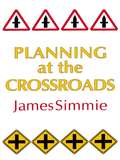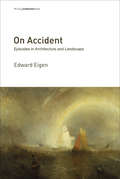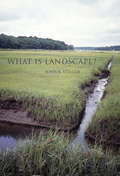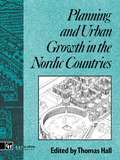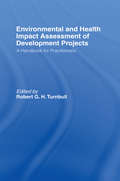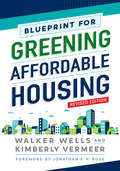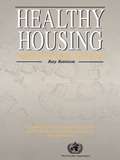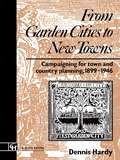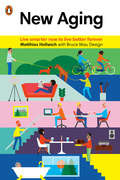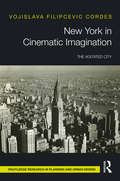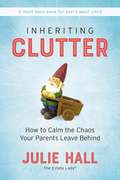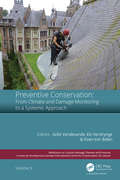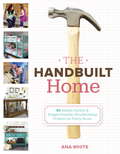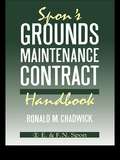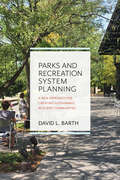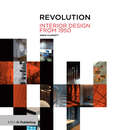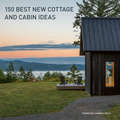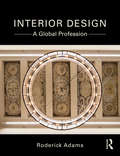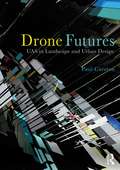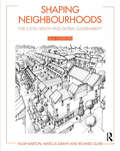- Table View
- List View
Guia de Segurança Residencial: Como Proteger Sua Casa & Família com Sistemas de Segurança, Câmeras, Empresas, Alarmes & Automação
by Hiddenstuff EntertainmentVocê está procurando proteger sua casa, seus pertences e sua família? Se você respondeu sim a qualquer uma destas perguntas, este guia é para você. Os recentes avanços tecnológicos tornaram a segurança residencial mais acessível, mais eficaz e mais barata do que nunca. Esqueça ter de pagar aquelas empresas de segurança residencial caras para proteger sua casa. Você pode fazer isso sozinho, por apenas algumas centenas de reais. Economize dinheiro e garanta que seus bens e sua família estejam seguros e protegidos. Nunca seja pego de surpresa por indivíduos que procuram prejudicar seus entes queridos e roubar suas posses. Este guia ensinará a você o seguinte: - Tipos de segurança residencial. - Como configurar. - Como proteger sua família. - Como economizar milhares de reais, fazendo você mesmo. -> Vá até o topo da página e clique em adicionar ao carrinho para comprar instantaneamente Isenção de responsabilidade Este autor e/ou o(s) proprietário(s) dos direitos não fazem reivindicações, promessas ou garantias com relação à precisão, integridade ou adequação do conteúdo deste livro, e expressamente se isentam da responsabilidade por erros e omissões no conteúdo deste. Este produto é apenas para uso de referência. Por favor, consulte um profissional antes de agir baseado em qualquer um dos conteúdos encontrados aqui.
Cómo cuidar de la carpa Koi (Cómo hacer... #1)
by Owen Jones¡Hola! Gracias por comprar este libro electrónico llamado 'Cómo cuidar de la Carpa Koi'. Espero que la información le resulte útil y provechosa. El contenido de este libro electrónico sobre estanques de jardín Koi y otros temas relacionados está agrupado en dieciocho capítulos, que le ayudarán a elegir un sitio para su estanque de carpas Koi, cómo montarlo y mantenerlo durante todo el año. También aprenderá a cuidar de sus valiosos peces durante las diferentes estaciones del año e incluso en condiciones adversas. Le puede ayudar a iniciar una nueva profesión o como mínimo le ayudará a ahorrar cien veces más en asesoramiento profesional. Como incentivo adicional, le doy permiso para usar el contenido en su propio sitio web o en sus blogs y sus boletines, aunque es mejor si lo vuelve a escribir con sus propias palabras primero. También puede dividir el libro y revender los artículos. De hecho, el único derecho del que no puede disfrutar es el de revender o regalar el libro tal como se le entregó. Si tiene algún comentario, por favor, envíelo a la compañía donde compró este libro o envíelo a owen@amiabledragon.com Puede encontrar más libros como este donde lo compró. Gracias de nuevo por comprar este libro electrónico, Atentamente, Owen Jones.
Elevage de la Carpe Koï (Comment faire... #1)
by Owen JonesElevage de la Carpe Koï Le contenu de ce livre audio sur les étangs domestiques de Koïs et les sujets connexes est organisé en dix-huit chapitres, qui vous aideront à choisir un site pour votre étang de carpes Koïs, à l'aménager et à l'entretenir toute l'année et à prendre soin de vos précieux poissons au cours des différentes saisons et même dans des conditions météorologiques particulièrement défavorables. Il peut même vous aider à vous lancer dans une nouvelle carrière. Le moins que vous puissiez faire est d'économiser des centaines de dollars sur les conseils d'un professionnel.
Homes and Health: How Housing and Health Interact
by Bernard IneichenThis book links where people live with their health. The author reviews how housing has influenced health throughout the past hundred and fifty years, discusses in detail current issues concerning housing and health and describes attempts at housing particular groups whose health is at risk.
Planning At The Crossroads
by James SimmieThrough a detailed analysis of studies of the effects of planning, comparing low levels of urban containment in California with much higher levels in the UK. Some comparative insights are also drawn from the (pre-conflict) Yugoslavian planning system. The analysis shows that many of the serious criticisms of planning are valid and leads to the conclusion that some sacred cows - notably "green belts" - should be abandoned. This distinctive text is of use to students, researchers and professionals in planning, geography and urban studies.
On Accident: Episodes in Architecture and Landscape (Writing Architecture)
by Edward EigenEngaging essays that roam across uncertain territory, in search of sunken forests, unclassifiable islands, inflammable skies, plagiarized tabernacles, and other phenomena missing from architectural history.This collection by “architectural history's most beguiling essayist” (as Reinhold Martin calls the author in the book's foreword) illuminates the unfamiliar, the arcane, the obscure—phenomena largely missing from architectural and landscape history. These essays by Edward Eigen do not walk in a straight line, but roam across uncertain territory, discovering sunken forests, unclassifiable islands, inflammable skies, unvisited shores, plagiarized tabernacles. Taken together, these texts offer a group portrait of how certain things fall apart.We read about the statistical investigation of lightning strikes in France by the author-astronomer Camille Flammarion, which leads Eigen to reflect also on Foucault, Hamlet, and the role of the anecdote in architectural history. We learn about, among other things, Olmsted's role in transforming landscape gardening into landscape architecture; the connections among hedging, hedge funds, the High Line, and GPS bandwidth; timber-frame roofs and (spider) web-based learning; the archives of the Houses of Parliament through flood and fire; and what the 1898 disappearance and reappearance of the Trenton, New Jersey architect William W. Slack might tell us about the conflict between “the migratory impulse” and “love of home.” Eigen compares his essays to the “gathering up of seeds that fell by the wayside.” The seedlings that result create in the reader's imagination a dazzling display of the particular, the contingent, the incidental, and the singular, all in search of a narrative.
What Is Landscape?
by John R. StilgoeA lexicon and guide for discovering the essence of landscape.“Mr. Stilgoe does not ask that we take his book outdoors with us; he believes that reading and experiencing landscapes are activities that should be kept separate. But, as I learned in his book, the hollow storage area in a car driver's door was once a holster, the 'secure nesting place of a pistol.' I recommend you stow your copy there.”—The Wall Street JournalLandscape, John Stilgoe tells us, is a noun. From the old Frisian language (once spoken in coastal parts of the Netherlands and Germany), it meant shoveled land: landschop. Sixteenth-century Englishmen misheard or mispronounced this as landskep, which became landskip, then landscape, designating the surface of the earth shaped for human habitation. In What Is Landscape? Stilgoe maps the discovery of landscape by putting words to things, zeroing in on landscape's essence but also leading sideways expeditions through such sources as children's picture books, folklore, deeds, antique terminology, out-of-print dictionaries, and conversations with locals. (“What is that?” “Well, it's not really a slough, not really, it's a bayou...”) He offers a highly original, cogent, compact, gracefully written narrative lexicon of landscape as word, concept, and path to discoveries.What Is Landscape? is an invitation to walk, to notice, to ask: to see a sandcastle with a pinwheel at the beach and think of Dutch windmills—icons of triumph, markers of territory won from the sea; to walk in the woods and be amused by the Elizabethans' misuse of the Latin silvaticus (people of the woods) to coin the word savages; to see in a suburban front lawn a representation of the meadow of a medieval freehold.Discovering landscape is good exercise for body and for mind. This book is an essential guide and companion to that exercise—to understanding, literally and figuratively, what landscape is.
Planning and Urban Growth in Nordic Countries (Planning, History and Environment Series)
by Thomas HallPlanning and Urban Growth in Nordic Countries examines urban development and planning in Denmark, Finland, Norway and Sweden. Emphasis is on the period from the mid-nineteenth century to the present day, and the authors of each 'country-study' look at their own national developments against the background of those in other Nordic countries well as the rest of Europe and the USA.
Environmental and Health Impact Assessment of Development Projects: A handbook for practitioners
by The World Health OrganizationThis handbook for practitioners in environmental and public health, environmental management, toxicology and ecotoxicology has been prepared by an international group of experts from both developing and developed countries and covers a wide range of topics in both environmental impact assessment and environmental health impact assessment.
Blueprint for Greening Affordable Housing, Revised Edition
by Walker Wells Kimberly VermeerBlueprint for Greening Affordable Housing is the most comprehensive resource on how green building principles can be incorporated into affordable housing design, construction, and operation. In this fully revised edition, Walker Wells and Kimberly Vermeer capture the rapid evolution of green building practices and make a compelling case for integrating green building in affordable housing. The Blueprint offers guidance on innovative practices, green building certifications for affordable housing, and the latest financing strategies. The completely new case studies share detailed insights on how the many elements of a green building are incorporated into different housing types and locations. Every affordable housing project can achieve the fundamentals of good green building design. The Blueprint gives project teams what they need to push for excellence.
Healthy Housing: A practical guide
by Ray RansonThe objective of this book is to encourage administrations to formulate a sound housing policy to solve basic health-related housing problems and to meet WHO's objective of healthful housing for all by the year 2000. The principles of healthy housing have universal applicability, as most countries of the developed world have areas of slum or otherwise insanitary housing.It is hoped that this guide will be used extensively as a reference to basic health requirements for new housing and human settlements and as a guide for assessing the hygienic quality of existing housing. The book would sit well alongside inter-professional and community education programmes.
From Garden Cities to New Towns: Campaigning for Town and Country Planning 1899-1946 (Planning, History and Environment Series #Vol. 13)
by Dennis HardyThis book offers a detailed record of one of the world's oldest environmental pressure groups. It raises questions about the capacity of pressure groups to influence policy; and finally it assesses the campaing as a major factor in the emergence of modern town and planning, and as a backdrop against which to examine current issues.
Modern Housing (Metropolitan America Ser.)
by Catherine BauerThe original guide on modern housing from the premier expert and activist in the public housing movement Originally published in 1934, Modern Housing is widely acknowledged as one of the most important books on housing of the twentieth century, introducing the latest developments in European modernist housing to an American audience. It is also a manifesto: America needs to draw on Europe&’s example to solve its housing crisis. Only when housing is transformed into a planned, public amenity will it truly be modern. Modern Housing&’s sharp message catalyzed an intense period of housing activism in the United States, resulting in the Housing Act of 1937, which Catherine Bauer coauthored. But these reforms never went far enough: so long as housing remained the subject of capitalist speculation, Bauer knew the housing problem would remain. In light of today&’s affordable housing emergency, her prescriptions for how to achieve humane and dignified modern housing remain as instructive and urgent as ever.
New Aging: Live Smarter Now to Live Better Forever
by Matthias Hollwich Bruce Mau DesignAging is a gift that we receive with life--and in New Aging, the architect Matthias Hollwich outlines smart, simple ideas to help us experience it that way. New Aging invites us to take everything we associate with aging--the loss of freedom and vitality, the cold and sterile nursing homes, the boredom--and throw it out the window. As an architect, Matthias Hollwich is devoted to finding ways in which we can shape our living spaces and communities to make aging a graceful and fulfilling aspect of our lives. Now he has distilled his research into a collection of simple, visionary principles--brought to life with bright, colorful illustrations--that will inspire you to think creatively about how you can change your habits and environments to suit your evolving needs as you age. With advice ranging from practical design tips for making your home safer and more comfortable to thought-provoking ideas on how we work, relax, and interact with our neighbors, and even how we eat, New Aging will inspire you and your loved ones to live smarter today so you can live better tomorrow.From the Trade Paperback edition.
New York in Cinematic Imagination: The Agitated City
by Vojislava Filipcevic CordesNew York in Cinematic Imagination is an interdisciplinary study into urbanism and cinematic representations of the American metropolis in the twentieth century. It contextualizes spatial transformations and discourse about New York during the Great Depression and the Second World War, examining both imaginary narratives and documentary images of the city in film. The book argues that alternating endorsements and critiques of the 1920s machine age city are replaced in films of the 1930s and 1940s by a new critical theory of "agitated urban modernity" articulated against the backdrop of turbulent economic and social settings and the initial practices of urban renewal in the post-war period. Written for postgraduates and researchers in the fields of film, history and urban studies, with 40 black and white illustrations to work alongside the text, this book is an engaging study into cinematic representations of New York City.
Inheriting Clutter: How to Calm the Chaos Your Parents Leave Behind
by Julie HallEveryday hundreds of adult children become middle-aged orphans when their elderly parents pass away, leaving behind more than just memories.You&’ve heard the horror stories: arguments over stuff, an inheritance lost forever when easily deceived parents are scammed, siblings estranged, an adult heir taken from daily responsibilities for months because of the enormous task of clearing out a childhood home. It doesn&’t have to be that way.The Estate Lady, professional estate liquidator Julie Hall, knows what to do. Whether your parents are still living or you&’re caught in the middle of a crisis, Inheriting Clutter: How to Calm the Chaos Your Parents Leave Behind has solutions. Hall provides trustworthy counsel on how to:Divide your parents&’ estate with peace of mindMinimize fighting with siblings during the estate settlement processClear out the family home in thirty days or lessIdentify potential items of value in the homeHave &“that conversation&” with your parentsPrepare your own children for the futureThe Estate Lady offers guidance for any executor, heir, or beneficiary, sharing some of her most fascinating stories as well as helpful checklists of the things that need to be done now and at the time of your loss.Inheriting Clutter gives you practical, effective steps for liquidating and distributing your parents&’ assets in a way that both honors them and promotes family harmony for generations to come.
Preventive Conservation - From Climate and Damage Monitoring to a Systemic and Integrated Approach: Proceedings of the International WTA - PRECOM3OS Symposium, April 3-5, 2019, Leuven, Belgium (Reflections on Cultural Heritage Theories and Practices)
by Aziliz VandesandeThe concept of preventive conservation has successfully introduced the knowledge that "prevention is better than cure" into the built heritage sector. The benefits of this approach are the cost-effectiveness, the improved protection of heritage values, the reduced risk for accumulating deterioration and additional damage, the prolongation of the physical service life of buildings and building parts and the empowerment of local communities in dealing with heritage. Increasingly, arguments rise against reactive treatment patterns, which result too often in postponed interventions and increasing costs for restoration. WTA-Nederland-Vlaanderen, the Raymond Lemaire International Centre for Conservation and the Civil Engineering Department of KU Leuven jointly organised an international conference on preventive conservation approaches - including climate and damage monitoring - and how to implement these monitoring tools within a systemic approach. The conference took place in context of the international WTA days, 3-5 April 2019, and the 10th anniversary of the UNESCO Chair on Preventive Conservation, Monitoring and Maintenance of Monuments and Sites (PRECOM³OS). The contributions meet the increasing demand for information, case studies and practical examples to support the transition towards more preventive rather than reactive conservation actions. The volume aims at academics and professionals involved or interested in the conservation of buildings, building parts and heritage.
The Handbuilt Home: 34 Simple Stylish and Budget-Friendly Woodworking Projects for Every Room
by Ana WhiteCreate a Beautiful, Modern Home with One-of-a-Kind DIY FurnitureBeds, organizers, Adirondack chairs, a play table, and more! It's easy to build inexpensive, quality furnishings with this indispensible collection of woodworking projects from Ana White, the popular blogger who has inspired millions of homemakers with her stylish furniture plans and DIY spirit. As a young mom on a tight budget, Ana learned to make her own well-designed pieces inspired by the styles in her favorite stores--saving thousands of dollars in the process.Now, in this reference for woodworkers of all skill levels, Ana shares everything she has learned along the way. Inside The Handbuilt Home you'll find:* Plans for 34 versatile furniture projects for every room in your house--from beginner-friendly home accessories to sturdy tables, a media center, kids' items, and storage solutions* Comprehensive information on using off-the-shelf lumber and basic equipment--almost every project can be made with a drill, a saw, and some hand tools* Easy-to-follow instructions, costs, and time estimates to guide even the most amateur of carpenters through any projectYou don't need to be physically tough or superstrong to make your own furniture, and it's okay if you don't know that a 2x4 doesn't actually measure 2 by 4 inches. All you need is the determination to create a better home for yourself or your family and the confidence to say, "I can build that." Also available as an eBook
Spon's Grounds Maintenance Contract Handbook
by Mr R Chadwick R.M. ChadwickAimed at those at the sharp end of contract grounds maintenance, this book will provide guidance for anyone unfamiliar with the process of contracting work out. Written in a clear and readable style and full of practical details it will be particularly valuable to local authorities who, from 1990 will be thrown into contractual maintenance and competitive tendering for the first time.
Parks and Recreation System Planning: A New Approach for Creating Sustainable, Resilient Communities
by David BarthParks and recreation systems have evolved in remarkable ways over the past two decades. No longer just playgrounds and ballfields, parks and open spaces have become recognized as essential green infrastructure with the potential to contribute to community resiliency and sustainability. To capitalize on this potential, the parks and recreation system planning process must evolve as well. In Parks and Recreation System Planning, David Barth provides a new, step-by-step approach to creating parks systems that generate greater economic, social, and environmental benefits.Barth first advocates that parks and recreation systems should no longer be regarded as isolated facilities, but as elements of an integrated public realm. Each space should be designed to generate multiple community benefits. Next, he presents a new approach for parks and recreation planning that is integrated into community-wide issues. Chapters outline each step—evaluating existing systems, implementing a carefully crafted plan, and more—necessary for creating a successful, adaptable system. Throughout the book, he describes initiatives that are creating more resilient, sustainable, and engaging parks and recreation facilities, drawing from his experience consulting in more than 100 communities across the U.S.Parks and Recreation System Planning meets the critical need to provide an up-to-date, comprehensive approach for planning parks and recreation systems across the country. This is essential reading for every parks and recreation professional, design professional, and public official who wants their community to thrive.
Revolution: Interior Design from 1950
by Drew PlunkettThe last half of the twentieth century saw the emergence, evolution and consolidation of a distinct interior design practice and profession. This book is invaluable for students and practitioners, providing a detailed specialist, contemporary historical analysis of their profession and is beautifully illustrated, with over 200 photos and images from the 1950s through to the present day.
150 Best New Cottage and Cabin Ideas
by Francesc ZamoraCreate a cozy getaway with this fabulous compendium in the highly successful 150 Best series, packed with images, ideas, inspiration, and information on the latest trends in small space design.150 Best New Cottage and Cabin Ideas shows off a diversity of creative, and innovative getaway homes the exemplify the small-space trend. Francesc Zamora draws on the developments of distinguished international architects and designers who have worked to achieve practical, innovative, and stylish solutions adapted to the specific needs and particular tastes of their clients.Filled with hundreds of color and black-and-white photographs, this comprehensive handbook offers an extensive collection of cabins and cottages from all over the world, and provides an inspirational source of ideas for architects, designers, and homeowners alike—whether you’re looking to design and build a new dwelling or renovating and redecorating an existing structure.
Interior Design: A Global Profession
by Roderick AdamsAs the globe shrinks and the concept of distance diminishes, this text challenges the current status quo by identifying the cohesions and specialisations of design communities across the continents. It sets out an international spatial design landscape, identifying and contouring global design practice and design hotspots from a range of case studies, interviews and design practice perspectives. Using a range of interior environments, the chapters link the origins, trends and perceptions of the interior to create new insight into trans-global design. The book expands, but also coheres the interior design discipline to ensure the subject continues to grow, develop and influence the inhabitations of the world. The book features a wealth of pedagogical elements including: Beautifully designed with over 100 full colour illustrations, photographs and examples of design work Maps and diagrams which highlight hotspots of design across the globe, providing strong graphic information Interview panels featuring professional insights from designers across the globe ‘Employability’ boxes, providing a good tips guide for students gaining employment across the globe ‘International Dimension’ boxes which strengthen the scholarship of studying interior design in a globalised way ‘Design Oddities’ box which brings into focus any new or contextual facts that help contextualise the global interior.
Drone Futures: UAS in Landscape and Urban Design
by Paul CuretonDrone Futures explores new paradigms in Unmanned Aircraft Systems (UAS) in landscape and urban design. UAS or drones can be deployed with direct application to the built environment; this book explores the myriad of contemporary and future possibilities of the design medium, its aesthetic, mapping agency, AI, mobility and contribution to smart cities. Drones present innovative possibilities, operating in a ‘hover space’ between human scales of landscape observation and light aircraft providing a unique resolution of space. This book shows how UAS can be utilised to provide new perspectives on spatial layout, landscape and urban conditions, data capture for construction monitoring and simulation of design proposals. Author Paul Cureton examines both the philosophical use of these tools and practical steps for implementation by designers. Illustrated in full colour throughout, Drone Futures discusses UAS and their connectivity to other design technologies and processes, including mapping and photogrammetry, AR/VR, drone AI and drones for construction and fabrication, new mobilities, smart cities and city information models (CIMs). It is specifically geared towards professionals seeking to understand UAS applications and future development and students seeking an understanding of the role of drones and airspace in the built environment and its powerful geographic imaginary. With international contributions, multidisciplinary sources and case studies, Drone Futures examines new powers of flight for visualising, interpreting and presenting landscapes and urban spaces of tomorrow.
Shaping Neighbourhoods: For Local Health and Global Sustainability
by Hugh Barton Marcus Grant Richard GuiseThis substantially revised and important second edition comes at a pivotal time, with both a strong agenda of localism in planning and with public health professionals now realising the vital importance of shaping urban environments in order to reduce the burden of disease and support better health outcomes. This guide ensures you: understand the underlying principles for planning healthy and sustainable neighbourhoods and towns plan the collaborative and inclusive processes needed for multi-sectoral cooperation develop know-how and skills in matching local need with urban form discover new ways to integrate development with natural systems design places with character and recognise good urban form guide communities, and advise developers, in the creation of successful and sustainable places for living. Containing many new case studies and a wealth of new research, this new edition has benefited from previous user feedback. Shaping Neighbourhoods is the indispensable guide for bridging the gulf between theory and practice, between planning authorities, investors and communities, and between different professional perspectives. Whether you are a student faced with a local planning project; a planner, urban designer or developer involved in new development; a health authority concerned with promoting physical activity; or a community group wanting to improve your neighbourhood; this book is for you.
